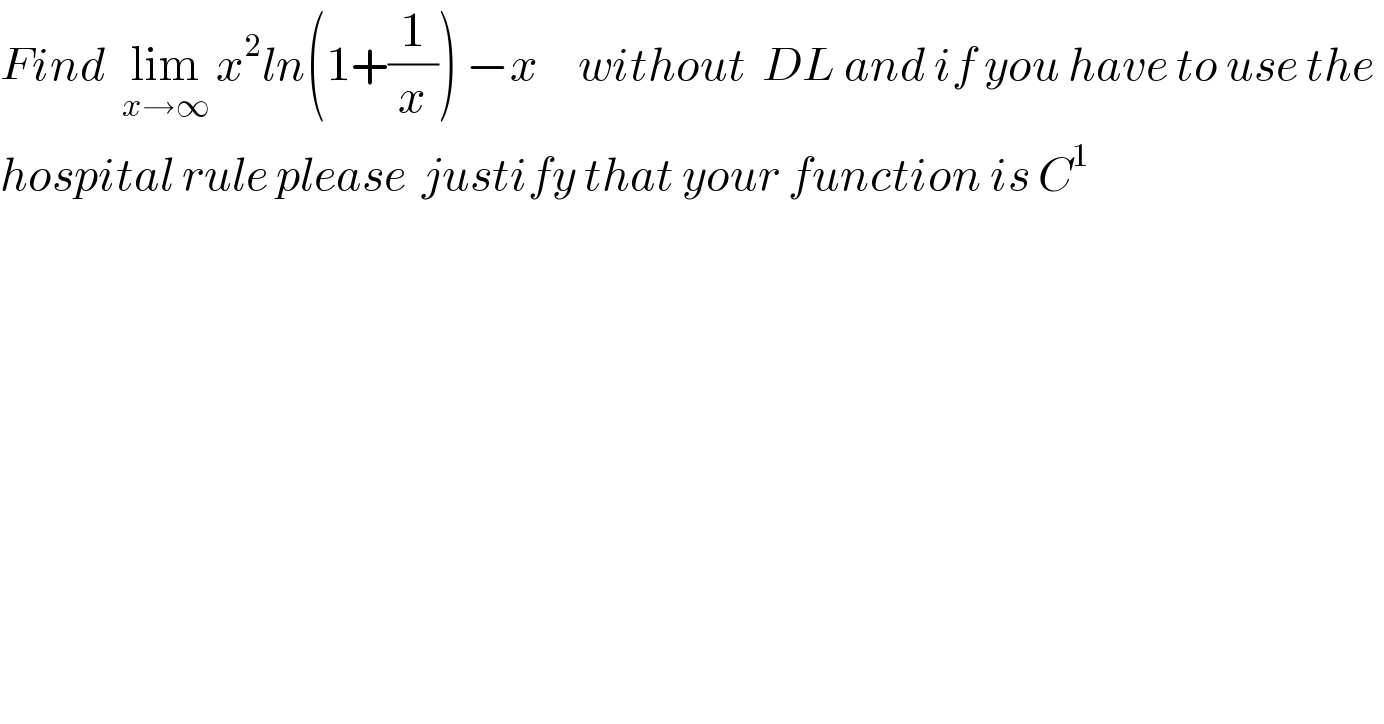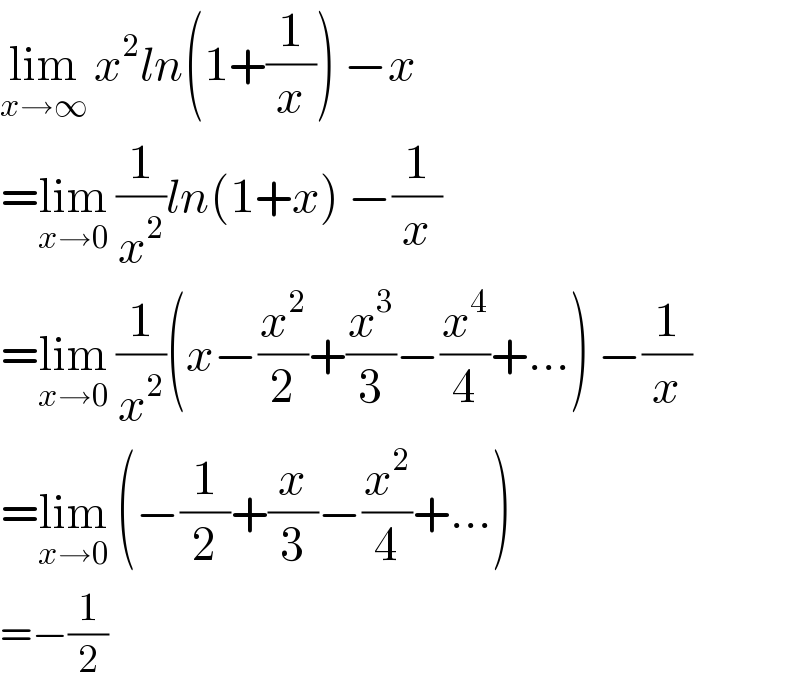Question Number 79689 by ~blr237~ last updated on 27/Jan/20

$${Find}\:\:\underset{{x}\rightarrow\infty} {\mathrm{lim}}\:{x}^{\mathrm{2}} {ln}\left(\mathrm{1}+\frac{\mathrm{1}}{{x}}\right)\:−{x}\:\:\:\:\:{without}\:\:{DL}\:{and}\:{if}\:{you}\:{have}\:{to}\:{use}\:{the}\: \\ $$$${hospital}\:{rule}\:{please}\:\:{justify}\:{that}\:{your}\:{function}\:{is}\:{C}^{\mathrm{1}} \: \\ $$
Commented by mr W last updated on 27/Jan/20

$$\underset{{x}\rightarrow\infty} {\mathrm{lim}}\:{x}^{\mathrm{2}} {ln}\left(\mathrm{1}+\frac{\mathrm{1}}{{x}}\right)\:−{x} \\ $$$$=\underset{{x}\rightarrow\mathrm{0}} {\mathrm{lim}}\:\frac{\mathrm{1}}{{x}^{\mathrm{2}} }{ln}\left(\mathrm{1}+{x}\right)\:−\frac{\mathrm{1}}{{x}} \\ $$$$=\underset{{x}\rightarrow\mathrm{0}} {\mathrm{lim}}\:\frac{\mathrm{1}}{{x}^{\mathrm{2}} }\left({x}−\frac{{x}^{\mathrm{2}} }{\mathrm{2}}+\frac{{x}^{\mathrm{3}} }{\mathrm{3}}−\frac{{x}^{\mathrm{4}} }{\mathrm{4}}+…\right)\:−\frac{\mathrm{1}}{{x}} \\ $$$$=\underset{{x}\rightarrow\mathrm{0}} {\mathrm{lim}}\:\left(−\frac{\mathrm{1}}{\mathrm{2}}+\frac{{x}}{\mathrm{3}}−\frac{{x}^{\mathrm{2}} }{\mathrm{4}}+…\right) \\ $$$$=−\frac{\mathrm{1}}{\mathrm{2}} \\ $$
Commented by john santu last updated on 27/Jan/20

$$\mathrm{mac}'\mathrm{laurin}\:\mathrm{series} \\ $$
